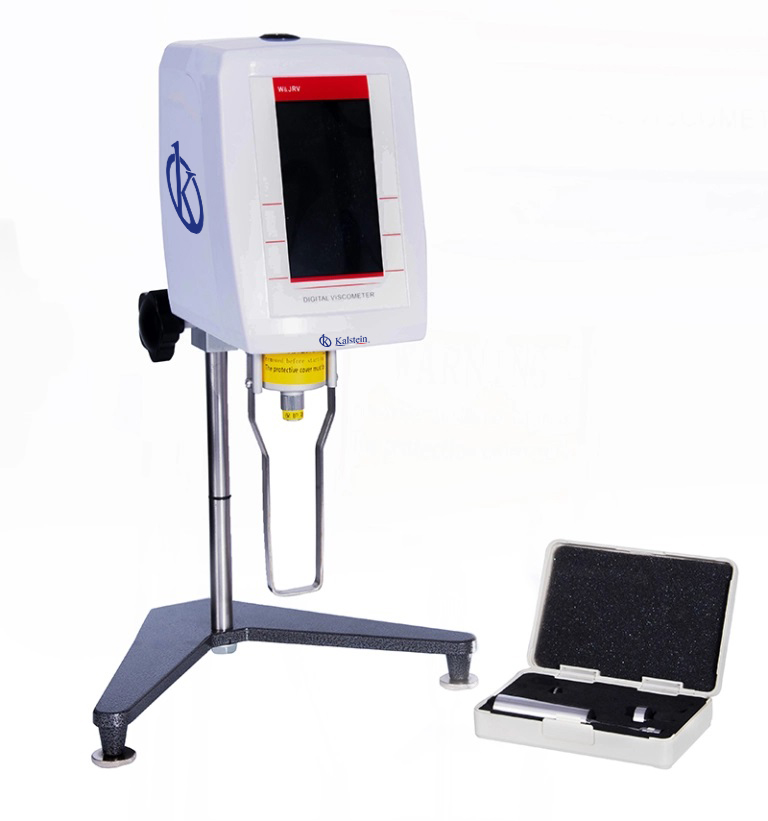Viscosity can be defined as the resistance offered by the molecules that make up a liquid to separate from each other, that is, it is the opposition of a fluid to deform and this opposition is due to the adhesion forces that some molecules of a liquid or fluid have with respect to the other molecules of the same liquid.
A liquid is considered viscous when it has a high resistance to flow, that is, the higher the viscosity of a liquid, the slower it will flow over a surface. The viscosity of liquids decreases with increasing temperature, which facilitates fluid flow.
This property is important in the lubrication of machines. If the value is too low, there will be a lot of contact between the surfaces, which will cause wear of the internal components. If the value is very high, the machine may overload due to the effort made to overcome the internal resistance of the lubricant.
The viscosity of a material can be an indirect measure of other properties, such as density. When making viscosity determinations, we must consider temperature variations, phase separation of the fluid and non-uniform samples, caused by the presence of large particles.
Viscosity can be expressed in square meter/second (m2/s) and pascal/second (Pa/s), when using the International System of Units. In the Cegesimal System of Units, it is expressed in centipoise (cP). One centipoise equals 10-3 Pa/s. Stokes (St), seconds (s), Saybolt seconds (SS), and Krebs units(KU) are also used.
Classification of viscosity
There are usually two different ways to express this property, absolute or dynamic viscosity and kinematic viscosity. The absolute viscosity depends on temperature and is determined by measuring the resistance of the liquid to flow when subjected to a controlled external force. The unit Pa/s is used to express this variable. As for kinematic viscosity, it is determined by calculating the flow of the liquid by action of gravity. It is expressed in m2/second.
Likewise, from the absolute viscosity can be calculated the kinematic viscosity, and vice versa. This is done using the value of the density of the fluid. That is, if we multiply kinematic viscosity by the density of the fluid, it allows us to obtain absolute viscosity. Conversely, if we divide the absolute viscosity between the density, we will obtain the kinematic viscosity.
Recently, the usefulness of the calculation of the extensional viscosity and the apparent viscosity has been mentioned, the first one refers to the viscosity value when the applied stress is an extensional stress and is a function of the deformation speed. It is used to characterize polymer solutions. As for the apparent viscosity, it is obtained as a result of the splitting of the shear stress between the deformation rate of the fluid. For example, the apparent viscosity value of a viscous liquid when a sharp object is introduced depends on its velocity gradient.
What equipment do we need to measure viscosity?
Viscosity is determined by a device called a viscometer. This apparatus allows the measurement of the viscosity of liquids and their flow properties. They are easy-to-operate instruments, provide quick results and can even be used in line measurements. In addition, they have various applications and can be used in different substances and materials.
The selection of the instrument will depend on the characteristics of the substance or material to be measured and the stage of the process where the measurement is taking place. For example, when we perform process control, real-time data collection is required. For this, viscometers are placed inside the processing plant installation, such as tanks or pipes. On the other hand, when quality control measurements are made, in order to validate the processing conditions and quality standards of a product, viscometers can be located in an area or laboratory of product control, since samples are taken randomly.
Kalstein Viscometers
At Kalstein we offer a wide variety of YR series viscometers, with models that you can choose according to the needs of your industry. Kalstein equipment offers stability, accuracy and precision in the measurements made. In addition, they are designed with a control panel that facilitates the configuration and visualization of the parameters of the measurement being made. For more information on Kalstein viscometers, visit the HERE
We are manufacturers, so in Kalstein you can make the purchase of viscometers at advantageous prices. For more detailed information, visit HERE




